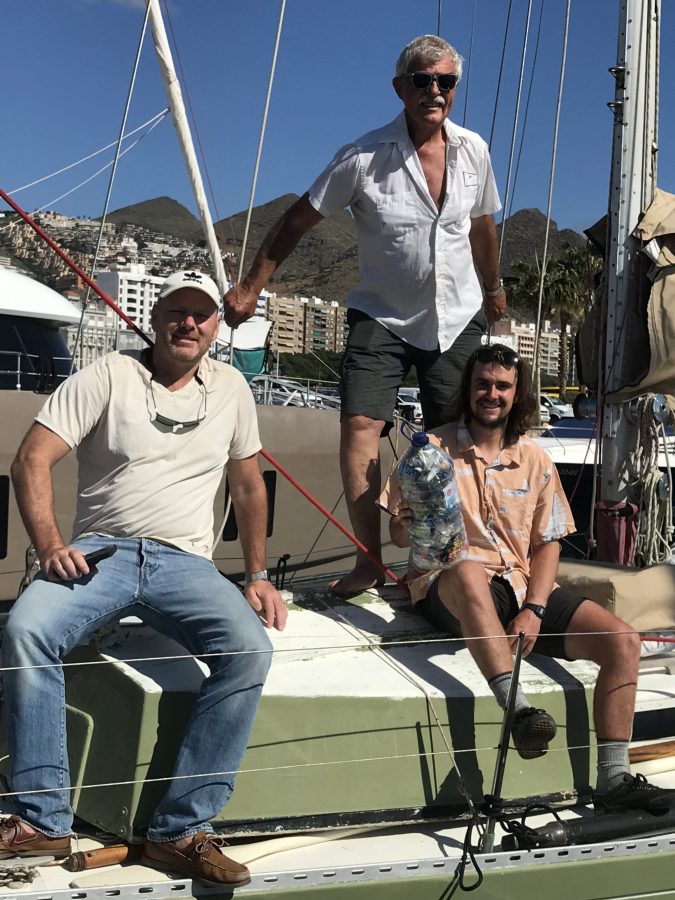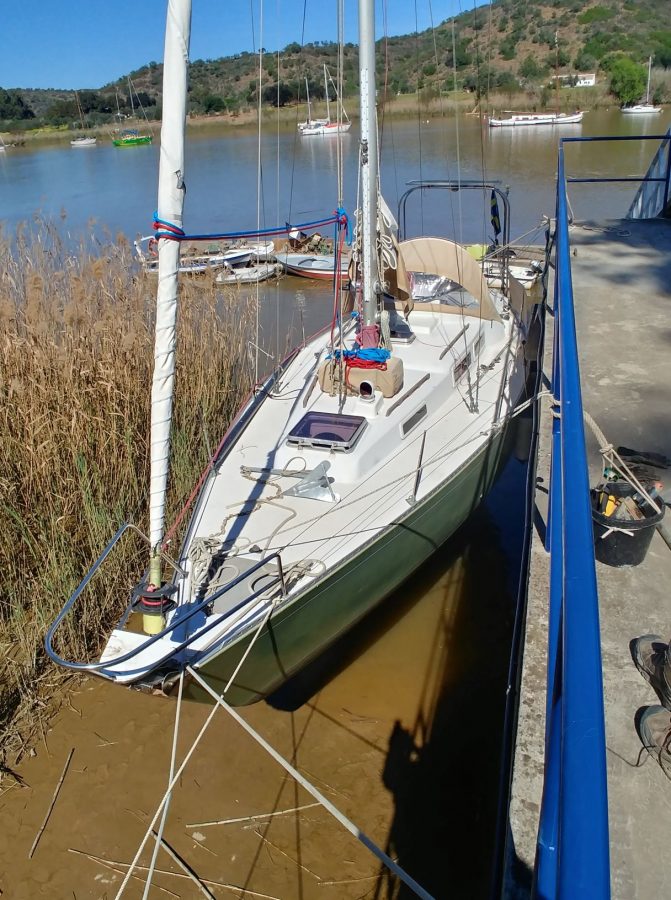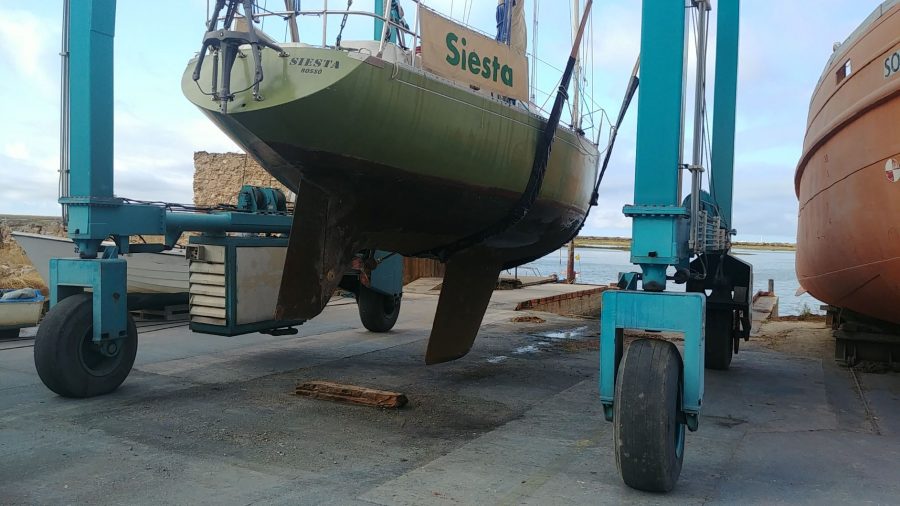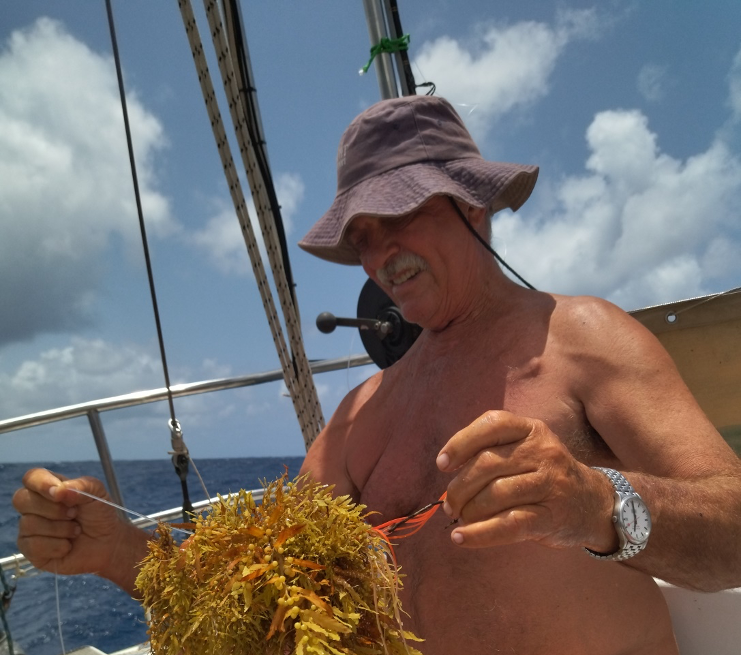Phil Wade is well known in the Superyacht world as a Superyacht Captain at the highest level, and for having taken on some pretty adventurous crossings. But he wanted to go back to his roots to where it all started – and do a crossing on a smaller yacht. This is his story.
A delivery by choice
For some time I had been worried about my health, and my growing beer belly. It was either a case of booking into a spa for a month or go to sea – a no brainer!
I had a strong desire to do just one more trade wind ocean passage so I put the word out whenever I had the chance but nothing much happened, which is not surprising when you are in your mid seventies. I told everyone that I was happy to go as crew or to skipper a delivery (free of charge) as long as the boat was less than 60 feet. I had done over 25 years on the super yachts and I did not want to do another crossing eating gourmet food and watching movies.
Then out of the blue I was invited to sail on the 2020 Cape to Rio Race with 8 Brazilians on a 54 footer called Saravah, so of course I jumped at the opportunity. What a great boat and a good bunch of guys, we took 18 days, came third and had a blast! When we arrived in Rio I was feeling so good, energetic and “alive”, plus I had lost 5 kgs so I immediately decided that I had to do it again but at a slower pace, and with the fishing lines out the back (which were not allowed on a race boat of course).
An impressive background
After a career in the merchant navy and then a shipping office in Durban, in January 1971 I sold everything in Durban and took off as crew on a 34 foot catamaran from South Africa to Rio. Pretty soon after that people started to pay me to sail their boats all over the world, mostly doing deliveries, which I found amazing, and I had a ball. For the next 20 years I delivered and sailed all over the world in boats ranging from 28 feet up to 127 feet. In 1991, I started as captain of a super yacht called Timoneer (www.Timoneer.org) and worked for the same American family for 25 years until I retired in 2015. I had done 38 Atlantic crossings as well as the Pacific and Indian Oceans including most of the significant yacht races world- wide. I did the 1985 Whitbread Around the World Race on a maxi called Drum. But in 2020 I wanted to go back to my roots!
I must be mad, people told me – sail across the Atlantic on a small boat at your age?! I must say I did think long and hard about it, but casually started looking on the internet to see if there was something really affordable to buy. Back in the Seventies and Eighties when I was doing small boat deliveries my motto was “Almost any boat can be taken almost anywhere, but not by almost anybody” so I was not being too fussy about what to buy, after all it was going to be a downwind trade wind crossing that I was planning – a piece of cake!
Finally sailing
To cut a long story short we found Siesta on a cruising boat website for just 15,000 Euros and it had all the gear we needed, as she had already crossed the Atlantic 5 times single handed.
The boat was lying in Portugal and after careful inspection I bought it, hauled her out in Faro and got ready to set off, only to be thwarted by Covid. Time ticked by and entry to Portugal was restricted, hurricane season came and went and suddenly we were at the end of 2020 but still not allowed to travel. Finally, with the next hurricane season approaching, I bit the bullet and made some arrangements with two crew (Tim Steer and Killian Glynn) and flew in to Portugal with seaman’s paperwork. We launched in Faro on 9th April and the following day did a short shake down sail around the Algarve coast to Portimao, where we stored up and had our mandatory PCR tests.
The sail South to Tenerife was without too much hassle and the job list when we arrived was surprisingly short. The first half of the trip had been in very light wind so a lot of motoring, but the second half we had a good stiff following breeze, hitting 11.6 knots on one of the surfs down a steep wave. Average speed for the 600 mile trip was 4.9 knots and we put 30 hours on the engine whereas across the Atlantic from Tenerife we never used the engine.
Tim, as per prior agreement, left us in Tenerife and Louis Dalton Hall joined us in his place, Killian was there for the duration and was a great help.
An ideal crossing
We spent a relaxed two weeks in Tenerife, met some great locals who owned a farm so filled us up with lots of bananas, which unfortunately all ripened at the same time. We finally set off with a great weather forecast on 1st May, motored out of the harbour and turned the engine off in a stiff Northerly breeze. The next time we turned the engine on was just outside of English Harbour, our final destination. The solar panels on Siesta are excellent so we had ample electrics for all our needs right the way across including navigation lights the whole way so we did not need to run the engine to charge batteries. Very impressive! Our boat has no refrigeration, water makers or any of that other fancy stuff (really basic) so our electrical needs were limited to lighting and charging computers and phones – these days you can’t live without them and of course without the satellite phone we could not have sent the daily reports. There are no wind instruments, auto pilots, only the GPS that uses power. Cooking was done on two paraffin Primus stoves which turned out to be the bane of my life – see the daily reports for more about this.
My wife Anne, says that I am not really a sailor, just a fisherman that goes sailing so that he can catch fish. Not quite true but still….. I am a very keen fisherman and it was one of the reasons I took off on the catamaran to Rio back in 1971 when I was an avid spear fisherman and was inspired by the vision of going off to exotic places to spear huge fish. The owner of the Cat bet me that I would not catch anything, but I won the bet by bagging 13 fish between Cape Town and Rio some of which I speared when I jumped overboard when becalmed mid ocean! One of the reasons that I really wanted to do another crossing is that during the Cape to Rio Race we had seen so few flying fish or for that matter anything else all the way across which I found strange and depressing so wanted to investigate further.
A notable change in fish supply
When Sue (my first wife) and I did a delivery back in the seventies and eighties we made a deal with the owners whereby we paid for the food, which saved a huge amount of accounting and explaining and we could eat what we liked. On a passage like the one I just did on Siesta we would budget for half of our meals being fish that I would catch and it was never a problem, often we would actually stop fishing as we had had enough so I was interested to see if things had changed. I believe they have.
Between Portugal and the Canaries I would have expected to catch one fish, usually it would be a Dorado (Mahi Mahi) but this is not a given so I was not upset when we caught nothing. However, south of the Canaries on the first few days we always used to catch small Dorado but this time nothing, and no sign of any flying fish which is their staple diet. This continued right up until about the half way mark when we started to see smaller flying fish and started catching Dorados, in fact we caught 11 before the Sargassum weed thwarted all fishing efforts. We ate 6 of the fish and released 5 but they were mostly small but we did lose two big hits on the lines so perhaps there were some larger ones around as well. All very different from the “old days”.
Another big change we noted was the amount of Sargassum weed. We saw masses and masses of it about 10 days out of Antigua where we never used to see any or very little. Talking to other yachts and Antiguans, everyone says the same thing about how bad it has become. The windward beaches in Antigua are piled high with the stuff rotting away. There is a theory that the increase is due to it now being propagated in the Amazon and Orinoco Rivers in South America helped by the fertilisers being used in the new farms. Who knows, but it is a big pain for us fishermen!
A betting time
Richard Masters of Master Yachts in Mallorca came up with the idea to run a sweepstake for our elapsed time and thereby raise money for my charity, Marine Inspirations and that turned out to be a great success. The prize was 200 Euros to the person who predicted the closest time to our elapsed time from Tenerefe to Antigua, which in the end was just over 22 days, with an average speed of about 5.3 knots. We had 56 entries and the winner donated the prize back to MI so in the end we raised just shy of 2.000 Euros, which included some substantial donations. A big thank you to all who participated, but especially to Richard. As part of this we did a daily report which Anne forwarded on to about 150 people by email as well as posted on the website. Thanks also to Penny Bell who helped Anne with the reports and to Terry, the website publisher also put up this link which is really fantastic. It shows our track across the Atlantic, and if you click on any particular day the technical details will be on the left of the page. Scroll down on these details and you will see the daily report for that particular day.
Reaching my goals
The two best days in a boat owner’s life are the day he buys and the day he sells – I had the best of both worlds. Before taking off I was sharing a bottle or two of wine with a fellow superyacht captain who was very interested in the project. After showing him the details and photos he said he would buy it from me for the same price as I paid as soon as I arrived in Antigua. What a great deal and Siesta now has a great new owner who will do her justice.
Looking back, the whole project was a great experience – I did what I wanted to do, I lost 6 kgs. We had no booze on the boat so I had to wait until Antigua to share some rum with my buddies who live there. I am smiling from ear to ear but this is definitely my Swan Song and I am now 100% retired from ocean crossings.
Inspired by Phil’s voyage? Read our story on how to buy a boat.









